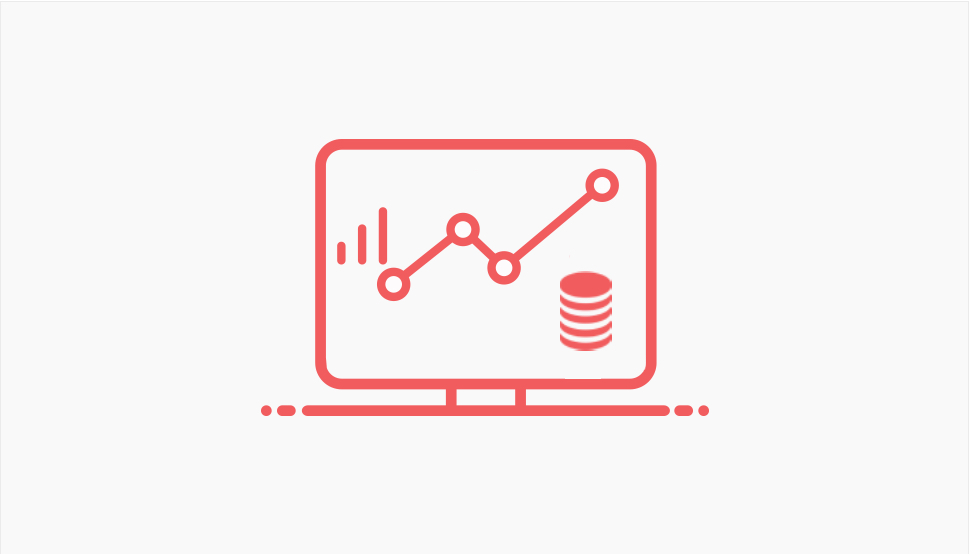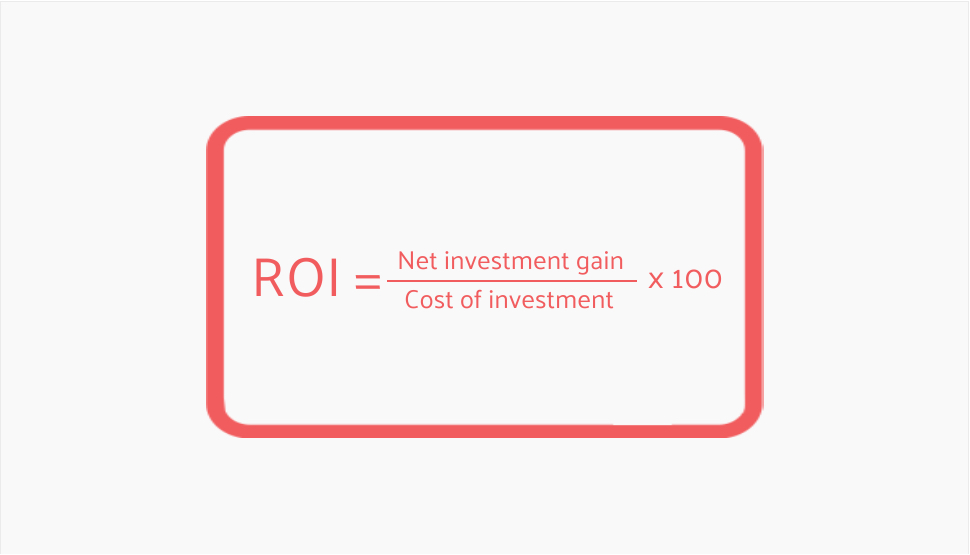What is ROI and How to Calculate It

The modern business provides so many tools and metrics for calculating a variety of success indicators. Whatever the niche you are in and regardless of the size and scope of your business, you are bound to run into the ROI at some point. If this is the first time you see this term or you simply didn’t have the need or interest to explore it earlier, you are naturally wondering what is ROI.
ROI – short for return on investment – is an important metric because it helps us understand and comprehend the overall impact of a specific project on the entire business, which makes ROI a great tool for generating a bigger picture of the project before its implementation. Although ROI calculation itself is a pretty simple mathematical operation, it is not always an easy task to calculate it, because in practice it is often impossible to express certain benefits and costs of a project. This is especially true for IT projects. In IT, it is oftentimes a challenge to show the benefits of e.g. disaster recovery solutions, which at first glance seem like a huge investment with no tangible benefits. A common example is a difficulty in quantifying the benefits of introducing ERP or any other business solution.
If ROI for you is a simple operation that’s difficult to calculate, a performance metric that’s also a sales tool, and a buzzword whose proper analysis just might save your business from sinking, stick around – you’ll get to read:

Simply put, ROI is a measure for determining the profitability of an investment. It compares how much you paid for an investment to how much profit you earned from it. This relatively simple mathematical calculation allows you to evaluate how successful your investment in a specific endeavor was or will be as well as to compare its performance to other similar endeavors.
ROI calculation aims to directly calculate the amount of return on a specific investment relative to the cost of that investment. It can be performed on its own for the purpose of measuring the effects of an individual effort or as a part of a more complex approach whose goal is to create a basis for a business case, proposal, or project. The overall ROI of a company is also considered a key performance indicator for evaluating how efficiently the business is managed.
ROI is commonly expressed as a percentage to allow you to have a clear understanding of the profit as using exact amounts can sometimes give us a false image of success or loss. What’s important to note is that ROI does not include the holding period or passage of time in its calculation so it can lead to failing to take advantage of opportunities for investing in some other projects.
Calculating ROI is not rocket science for sure, though understanding its impact may not be as simple as the calculation itself. You just need to divide the gain from your investment by the cost of the investment and multiply it with 100 to get a percentage. The formula is pretty simple and clear:

For example, let’s say you made an investment with a profit of $100 that cost you $100 – this investment would have an ROI of 1, or 100% when expressed as a percentage. The amount you earned from an investment is often called the net profit or the net investment gain.
So, just for the sake of making the formula as clear as possible:
-
The net investment gain or net profit is the net return you make with an investment, after assessing costs you already put in
-
The cost of investment is the whole amount of money you’ve invested in a certain investment.
This is a standard, basic formula that has a wide range of applications – it can be used in marketing, sales, and any kind of business project when you need a clear indicator of profitability. There are also other, different ROI formulas that take different factors such as time or investment base into account. That’s why it is important to know which formula was used in the specific case as each equation measures specific sets of investments. There are also plenty of online ROI calculators available that you can use for free.

ROI is a fast way to understand your investment’s impact on your business. You can use it for evaluating different sales strategies, deciding whether or not to hire new employees, and generally to get insight into the profitability of any investment. You can also apply the formula to your personal budget as well as to your business, just bear in mind that ROI is as realistic as the factors you include in its calculation.
You can use ROI whenever you need to assess any type of expenditure. For example, ROI analysis is commonly used for evaluating the cost of advertising. If the investment of $5,000 in advertising led to a $75,000 profit in sales, it means the ROI on the ad investment is 1500%. The percentages provide a very clear picture of which efforts were worthwhile.
Generally, it is considered that an annual ROI of 7% or bigger is a good ROI. Since it often depends on many different factors, including industry, benefits, and expenses a good ROI may imply very different values in different industries. Instead of looking for definitions of good ROI in your industry, it might be wiser to try to answer the essential questions like how much risk you can afford to take on, how much profit you need to make, and what if you suffer from loss. Only after you have clear answers to these questions, does it make sense to make calculations for good ROI.
ROI is without a doubt a very useful tool for evaluating profitability ratios, but it is not perfect. The most commonly mentioned drawback of ROI is its inability to account for time in the equation. At first glance some investments may seem very lucrative, but when you realize it took more than five years to make a certain profit the picture is completely different. Then, you compare that investment with some other that produced less profit but within only a year and the equation gets more and more complicated. That’s exactly the reason why many variations of ROI emerge all the time, aiming to include more relevant factors and provide a more realistic picture of the profitability.
The second drawback of ROI is that it does not consider the nonfinancial benefits. If a certain investment brought too much stress into your life and caused you to lose valuable employees, its profitability is questionable however good the situation looked on paper. Nonfinancial factors may seem irrelevant but their effect is nevertheless real and often very strong. ROI is just a basic tool, and it should definitely be used for getting a general idea. But for a more precise image, you’ll either have to customize the ROI formula to match your needs or use some other tools together with it.

Due to the initial shortcomings of ROI, many innovative formulas emerged over the years. The social return of investment or SROI was developed in the late ‘90s with the aim to provide a broader picture by considering non-financial factors like social and environmental metrics. SROI is particularly useful for understanding the value of certain projects within socially responsible investment practices. SROI is considered outcome-based and takes into account the wider impact of economic, environmental, and social value. It summarizes these results into tangible money values. The SROI calculation looks like this: net present value of benefits/net present value of the investment.
Social media marketing has very specific metrics and needs. Therefore the social media statistics ROI specifies the impact and success of social media campaigns. It can, for instance, provide info about how many clicks or likes resulted from a specific unit of effort. Similarly, the marketing statistics ROI aims to define the return that results from advertising or marketing campaigns.
Since not accounting for the time spent in the project is often mentioned as one of the biggest ROI drawbacks, the annualized ROI formula tries to consider the length of time a stakeholder has the investment.
In the education niche, an interesting ROI variation is created to identify the amount of information learned and retained as a return on a certain educational program. Since the economy changes and evolves all the time we can only expect to have more and more variations of ROI in the future.
ROI analysis is particularly precious for marketers. Your investment in marketing has a direct impact on the success of your business, and more precisely on your sales results. Therefore knowing what kind of marketing investments paid off the most may also provide you with much more useful information about your customer’s traits and habits apart from the profit it brought to your business. Not to mention that it also helps you make even more profit by not wasting time and funds on efforts that do not pay off significantly.
For instance, ROI can help you determine whether an offline or online marketing campaign is better for your product. After launching both, you can evaluate which one earned you more profit. The only thing is marketing ROI analysis is not always so simple, particularly not for offline campaigns. It is hard to measure the profit from an offline campaign in general, and calculating an offline campaign ROI is no exception. When it comes to online marketing, there are many tools that can make marketing ROI analysis easier.
Google analytics can be particularly useful as it provides you with many different and very precise stats about your online campaigns. You can create a customized ROI formula that takes into account the factors that you find most important for the particular campaign and use them to calculate its effectiveness. CRM software may also be very useful as it streamlines your interaction with consumers and helps you collect important consumer data. Your marketing ROI analysis will help you understand how to invest your money and maximize your profit by focusing on one particular segment of your marketing strategy that has the best ROI.
Marketing ROI does not always have to focus on the money profit. In the case of social media marketing, for example, if your goal was to increase your social media following you can perform an ROI analysis to evaluate the success of your efforts.
In Conclusion
Regardless of its limitations, ROI stays a strong indicator of profitability in most areas of business. There is not a business decision you can make that is not impacted by your (lack of) knowledge of ROI. The only way you can optimize profitability is by knowing which efforts are yielding the best results. You can always get creative and customize the ROI formula to take more factors into consideration and get more precise information about your investment’s profitability.
ROI can actually be considered an excellent sales tool in cases when you need to persuade your managers or your employees into using some marketing tactic over some other or when you need to choose which project to invest in. A well-done ROI calculation is a very effective way to explain the usefulness of the project and is an invaluable tool for the optimal allocation of budget resources. But, it is not enough just to calculate it. For the ROI calculation to be really helpful, you also need to know how to analyze it bearing in mind all the other business metrics and aspects. The result of the ROI analysis provides you with a measurable indicator of the final business goals to be achieved by a certain project.
Many companies developed their own, unique ROI formulas and that’s one of the reasons why you should never compare your ROI to other companies’ ROI unless you know the exact equation they used. Marketing is an area that can especially benefit from ROI, as an optimized marketing strategy has a strong impact on every aspect of the business. Small and new businesses will also find conclusions based on ROI analysis precious for their business development.



